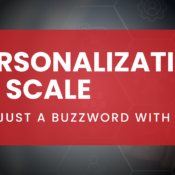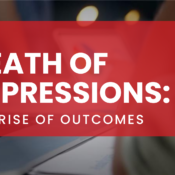/
/
The IBM of Education
Amidst tightening government regulation and pressure to live up to gainful employment promises, for-profits face tough times ahead. A while back, the Mudd blog predicted that only those for-profit universities that could make the tight turn to adapt to the changing market and government regulations would survive.
Exactly how they would revolutionize the industry was anyone’s guess. Would they tighten admissions standards to become more like traditional universities? Forge exclusive partnerships with corporations that could use their newly graduated students’ services? Or would the industry fail altogether?
Co-editor of Reinventing Higher Education: The Promise of Innovation Andrew P. Kelley developed a rather innovative proposal in a recent article published in The Atlantic. His solution to the for-profit debacle? They could become “the IBM for education,” providing to non-profit universities the systems to leverage technology and adapt to market forces (i.e. changing student demographics). It is Kelley’s hope that like the technology giant, for-profit universities could boost profitability significantly by switching its offerings from hardware to software/business systems solutions. In other words, corporate university could help non-profit institutions with what the former do best—increasing enrollment and setting up systems that cater to non-traditional and low-income students.
It’s not a bad idea. In an era when more than half of enrolled higher education students are labeled “non-traditional” (working full-time, attending school part-time or have a GED rather than a HS diploma), particularly community colleges and two-year universities could stand to benefit tremendously from the vast experience of for-profits with non-traditional students. “At what price?” is the next question.
The traditional university—strapped for cash due to federal funding cuts, troubled portfolios and recession-wary donors—could use a helping hand in growing and adapting to meet the needs of a dynamic education market, but whether they can find the money to do so—and in a timely manner—is questionable. Federal higher education spending is expected to decline by $5 billion this year.[i]
Even if community colleges could pay for big name for-profit consultants to come in and help expand and adapt current programs, the scale of non-profits often differs markedly from the most successful for-profit universities. Unlike IBM, whose consumer base did not markedly change when it adapted its product offering, for-profits who begin to offer enrollment solutions to non-profits would suffer a dissonance in operational scale—not to mention its target market.
As we mentioned in “A World of Difference,” part III of our series, “The Rise of the For-Profit University,” the for-profit student is decidedly different from the traditional university or even community college student. The for-profit caters to an older demographic with blue collar backgrounds; however, their ability to adapt to market needs may put them ahead of the curve in the future with the increasing number of middle class students who can’t get into traditional colleges or universities. California’s recent crisis with over-crowded community colleges and state-wide education funding debacle has made higher education largely unattainable for the middle class, who neither qualify for government aid nor can afford the steadily increasing price tag of even state universities.[ii] Perhaps the biggest change the for-profits’ evolution can help solve is the plight of the increasingly marginalized middle-class.
It would take some great agility to turn around a mammoth for-profit educational system into a business that sells educational agility (i.e. helping schools adapt to market forces), but the for-profits seem to be evolving as we speak. They’re weeding out more at-risk students before they enroll, increasing transparency about graduation rates and student debt, and introducing risk-free enrollment trials.
Admittedly, these changes focus on their current offerings rather than vertical expansion, but Kelley’s idea isn’t too far-fetched. The AEI fellow may be on to something revolutionary in the educational system: privatization.
Written by: Alicia Locher
Recent Posts
Mudd Advertising
Mudd Advertising is Partnering with Equifax
Mudd Advertising
Personalization at Scale—Not Just a Buzzword
Mudd Advertising
The Death of Impressions: The Rise of Outcomes
All Categories
Tags
aia ads
automotive
ctv
digital marketing
direct mail
direct marketing
display
display ads
dynamic inventory display
email
email marketing
EV marketing
facebook
gbp
google analytics
google my business
google my business inventory
google shopping ads
internet marketing
local seo
MUDDid
mudd id
online marketing
pay per click
performance max
pmax
pop
ppc
radio
retargeting
search engine marketing
search engine optimization
sem
seo
social
social media
social media marketing
traditional marketing
traditional media
ux management
vehicle listing ads
video advertising
video production
vla
web ux




